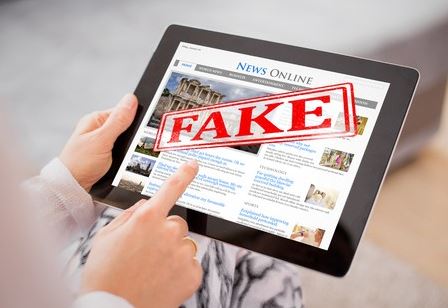Some time back, I watched a news video on YouTube which announced that boxing icon Manny Pacquiao had bought the franchise of then NBA champion Golden State Warriors for a sizeable amount. The video even showed Manny in a basketball scrimmage with some players in the practice facility of the Warriors in Oakland, California.
I believed the news and even told friends about it. I got suspicious only when I didn’t see the story in any other media outlet.
Later I found out that Pacquiao was only paying his favorite NBA team a visit. Bottom line: The video was real, but the story was completely fake.
In Washington, DC, a man entered a restaurant with a rifle and fired his weapon, claiming he was “self-investigating” an online conspiracy theory, which turned out to be baseless (npr.org, citing a police report). Bottom line: Fake news can be dangerous.
After I started this piece, I came upon a front-page story in the June 14 issue of the Inquirer, which underscored the timeliness of this topic. It said that according to the latest Centre for International Governance Innovation-Ipsos global survey (conducted early this year among 25,000+ internet users in 25 countries), a whopping 86 percent or almost nine out of every 10 respondents around the world have been duped by fake news.
Growing distrust
The respondents wanted governments and social media companies to crack down on these activities, saying these were contributing to a growing distrust of the internet, and negatively impacting economies and political discourse.
The survey revealed that fake news was most prevalent on Facebook, but also appeared on YouTube, blogs and Twitter. The primary sources of fake news were the US, followed by Russia and China.
On a more personal level, CNN recently reported that according to the Washington Post’s Fact Checker, US President Donald Trump, in his first 869 days in office, said 10,796 things that were either misleading or outright false. Put another way, he lied more often than people wash their hands each day.
Similarly, Inquirer columnist John Nery, in his June 11 article titled “Why does the President lie?” said that our own President’s lies were so many that he (Nery) had literally lost count.
Intention
Lying, and its many variants, have been with us since the dawn of human history. There is outright falsehood, which is probably the worst. There is also exaggeration, omission of facts, selective reporting, willful misinterpretation, white lies, etc. The common denominator is the intention to deceive or mislead. In this digital age, it’s called “fake news.”
For a long time, there were effective checks on the veracity of the news for responsible self-monitoring and self-regulation. But with the advent of the internet, and the proliferation of social media, any individual or group could have a field day spreading all kinds of information, with virtually no prescreening and inadequate after-the-fact controls and sanctions.
Today we have armies of hackers, trolls, imitators, scammers, clandestine influencers and purveyors of fake news, in every area of social activity—economics, trade, religion, science, the environment, culture and the arts, and specially politics.
But the really sad part is when even state leaders and influential public figures, traditional models of integrity and truthfulness, routinely show little or no regard for truth. Their constituents and audiences, initially shocked and incredulous, eventually come to tolerate and even accept this behavior. I believe that constant disrespect of the truth is not only dangerous, but also contagious.
Back in college, our main professor in freshman year admonished us not to readily believe everything we read in books, even those which were required or recommended reading, written by experts and respected authors. This wise advice, which I have taken to heart, is all the more applicable in this digital age when anyone can pose convincingly as an expert on a particular subject, complete with impressive-sounding but unverifiable credentials, to bait the gullible.
Real vs fake
So, how can we tell the real from the fake in the digital world? This is a tall order, but paradoxically a big part of the solution can be found on the internet itself. There are helpful sites which give guidelines and specific tips on how to spot bogus websites, fake news and the like. Here are some: “How to Spot Real and Fake News” (Mindtools.com); “4 Tips for Spotting a Fake News Story” (Harvard University, Harvard.edu); “Fake or Real? How to Spot Check the News and Get the Facts” (National Public Radio, npr.org).
After wading through the many detailed suggestions in these and other sites, I have come up with my own simplified tips, using some of their inputs:
Check the stated source of the news or information. If it is not an established and well-known organization, look up its credentials on its own website or through Google. Whenever possible, go to the primary source cited. If no primary source is mentioned, be suspicious.
Cross-check with other sources. Any newsworthy event or development is bound to appear in other digital sites.
Verify/examine some of the background facts, details and quotes. Are they accurate or realistic? If not, be skeptical and reserve judgment.
If it is current news, see if it has also come out in traditional mass media (TV, radio, newspapers). They are still the most reliable, including their digital versions.
Fake news can be harmful in varying degrees, and in many ways. At its worst, it can lead to defamation, demoralization, panic and even violence. Helping to spread it multiplies its negative consequences. Let us resist the temptation to share news or information we obtain from any source on the internet, unless and until we are fully convinced of its veracity. —CONTRIBUTED














































